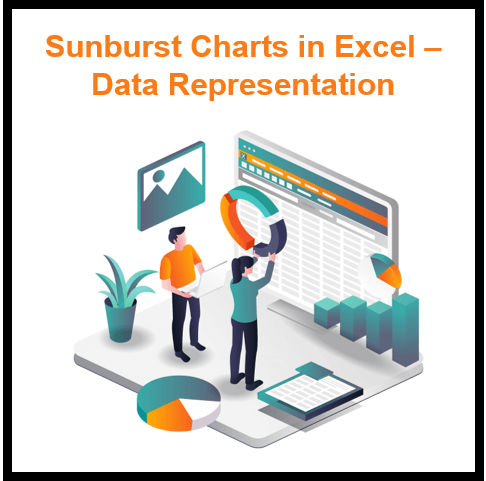Sunburst charts are a powerful way to show the relationships between different data points. They’re a great way to see how your trends change over time, and they can be incredibly useful for understanding your data.
However, you might be surprised how easy it is to make Sunburst charts in Excel using the built-in charting tools. In this article, we’ll show you how to create a Sunburst chart in Excel using the built-in charting tools, and then use it to understand the relationship between different data points.
To make sun-burst charts, you first need to create a table that shows your data. Then, you need to add a column called “days” which will show the number of days since the last day of the data. Finally, you need to add a column called “sun_hours” which will show the number of hours since the last day of the data.
Sun-burst charts are easy to use and can be used in a variety of ways, including for marketing, business analysis, and scientific research. Sun-burst charts are a great way to visualize data quickly and easily. They’re perfect for displaying trends, describing relationships, and forecasting future patterns.
How to create a Sunburst chart in Excel
To create a sun-burst chart in Excel, you first need to create a table that shows your data. You can use the built-in table tools to create a table like this:
CREATE TABLE `sunburst` (
`day` int(10),
`sun_hours` int(10),
)
Now, you can add a column called “days” which will show the number of days since the last day of the data. You can then add a column called “sun_hours” which will show the number of hours since the last day of the data.
Next, you need to add a line to your spreadsheet and type:
SELECT `day` AS `day`, `sun_hours` AS `sun_hours`, COUNT(DISTINCT `day`) AS `count` FROM sunburst
You’ll now see a list of all the days in your table. You can use this list to create a Sunburst chart by adding a row to your table and entering the following information into the cell:
Sunburst Chart:
Day Count 1 2 3 4 5 6 7 8 9 10 11 12 13 14 15 16 17 18 19 20 21 22 23 24 25 26 27 28 29 30 31 32 33 34 35 36 37 38 39 40 41 42 43 44 45 46 47 48 49 50 51 52 53 54 55 56 57 58 59 60 61 62
How to use Sun-burst charts todisplay trends in your data
To use a sun-burst chart in Excel, you first need to create a table that shows your data. Then, you need to add a column called “days” which will show the number of days since the last day of the data.
Finally, you need to add a column called “sun_hours” which will show the number of hours since the last day of the data.
To create a sun-burst chart, follow these steps:
1. Start by creating a table that shows your data. This table should include the following fields: rows: data1: array[0..2], days: int, sun_hours: int
2. Now, add a column called “days” to your table. This column will show the number of days since the last day of the data.
3. Add a column called “sun_hours” to your table. This column will show the number of hours since the last day of the data.
4. Now, use the built-in charting tools to create a sun-burst chart in Excel.
To do this, follow these steps:
1. Right-click on your table and select “New Chart”
2. Choose an instance of Excel for yourChart
3. Select Sunburst Chart
4. Click on OK
5. Enter your data in the corresponding cells
6. Click on OK
7. Click on Close
Using sun-burst charts for marketing
One of the most common uses for sun-burst charts is for marketing. By using sun-burst charts, you can see how your data changes over time and understand relationships between different data points.
Sun-burst charts are a great way to see how your data changes over time, and they can be incredibly useful for understanding your data. Sun-burst charts are easy to use and can be used in a variety of ways, including for marketing, business analysis, and scientific research.
Sunburst charts are a great way to visualize data quickly and easily. They’re perfect for displaying trends, describing relationships, and forecasting future patterns.
Using sun-burst charts for business analysis
Sun-burst charts can be used for a variety of business analysis purposes. For example, you might use sun-burst charts to show how your data changes over time. You could also use them to see how different data points influence each other. Sun-burst charts can also be used to understand the relationships between different data points.
Use sun-burst charts to understand relationships between different data points
You can use sun-burst charts to understand relationships between different data points. For example, you might want to see how many days have passed since last week’s data.
You could also see how long it has been since the most recent sunrise or sunset. You can also use sun-burst charts to explore relationships between different data points and find patterns that you might not be able to see with other methods.
Use the built-in charting tools to create sun-burst charts
Next, you can use the built-in charting tools to create your sun-burst chart. To do this, you first select the table in which you want to save your data. You then click on theChart tool and select the sun-burst chart you want to create.
As you can see, there are many different ways to create sun-burst charts in Excel. You can use various methods to generate your Sunburst charts, and there are plenty of options available depending on what you want your chart to show.
Create a table to show your data
To create a sunburst chart in Excel, you first need to create a table that shows your data. This table should show the following information: Name | Data
1|Sunrise | Sunrise time
2|Sunset | Sunset time
3|days | Days since the last day of the data
4|sun_hours | Sun hours since the last day of the data
Next, you want to add a column called “days” which will show the number of days since the last day of the data. You can do this by adding a row to your table and then adding a column called “day” to that row.
The next step is to add a column called “sun_hours” which will show the number of hours since the last day of the data. You can do this by adding a row to your table and then adding a column called “hour” to that row.
You’ve now added two columns to your table, one for sun_hours and one for days. Now you need to add a row to your table and then add a column called “sunrise” to that row. The next step is to add a column called “sunset” to your table and then add a column called “ sunset” to that column. Finally, you need to add a column called “days” to your table and finally
Conclusion
Sunburst charts are a powerful tool for data analysis and visualization.




26 thoughts on “Sunburst Charts in Excel: How to Make the Most of Your Data”
… [Trackback]
[…] Info to that Topic: skillfine.com/sunburst-charts-excel-guide/ […]
… [Trackback]
[…] Find More Information here to that Topic: skillfine.com/sunburst-charts-excel-guide/ […]
… [Trackback]
[…] Info to that Topic: skillfine.com/sunburst-charts-excel-guide/ […]
… [Trackback]
[…] Information to that Topic: skillfine.com/sunburst-charts-excel-guide/ […]
… [Trackback]
[…] Here you can find 56623 more Information to that Topic: skillfine.com/sunburst-charts-excel-guide/ […]
… [Trackback]
[…] Find More Info here on that Topic: skillfine.com/sunburst-charts-excel-guide/ […]
… [Trackback]
[…] Here you can find 47661 more Info on that Topic: skillfine.com/sunburst-charts-excel-guide/ […]
… [Trackback]
[…] There you will find 44439 more Information to that Topic: skillfine.com/sunburst-charts-excel-guide/ […]
… [Trackback]
[…] Find More on that Topic: skillfine.com/sunburst-charts-excel-guide/ […]
… [Trackback]
[…] Find More on that Topic: skillfine.com/sunburst-charts-excel-guide/ […]
… [Trackback]
[…] Here you will find 87947 more Info to that Topic: skillfine.com/sunburst-charts-excel-guide/ […]
… [Trackback]
[…] Read More to that Topic: skillfine.com/sunburst-charts-excel-guide/ […]
… [Trackback]
[…] Info on that Topic: skillfine.com/sunburst-charts-excel-guide/ […]
… [Trackback]
[…] Find More here on that Topic: skillfine.com/sunburst-charts-excel-guide/ […]
… [Trackback]
[…] There you will find 60106 additional Info on that Topic: skillfine.com/sunburst-charts-excel-guide/ […]
… [Trackback]
[…] Find More on that Topic: skillfine.com/sunburst-charts-excel-guide/ […]
… [Trackback]
[…] Read More on to that Topic: skillfine.com/sunburst-charts-excel-guide/ […]
… [Trackback]
[…] Find More here to that Topic: skillfine.com/sunburst-charts-excel-guide/ […]
… [Trackback]
[…] Read More on to that Topic: skillfine.com/sunburst-charts-excel-guide/ […]
… [Trackback]
[…] Here you will find 65464 more Information on that Topic: skillfine.com/sunburst-charts-excel-guide/ […]
… [Trackback]
[…] Read More Information here on that Topic: skillfine.com/sunburst-charts-excel-guide/ […]
… [Trackback]
[…] Read More on that Topic: skillfine.com/sunburst-charts-excel-guide/ […]
Your point of view caught my eye and was very interesting. Thanks. I have a question for you.
I don’t think the title of your article matches the content lol. Just kidding, mainly because I had some doubts after reading the article.
This is my first time pay a quick visit at here and i am really happy to read everthing at one place
I appreciate you sharing this blog post. Thanks Again. Cool.